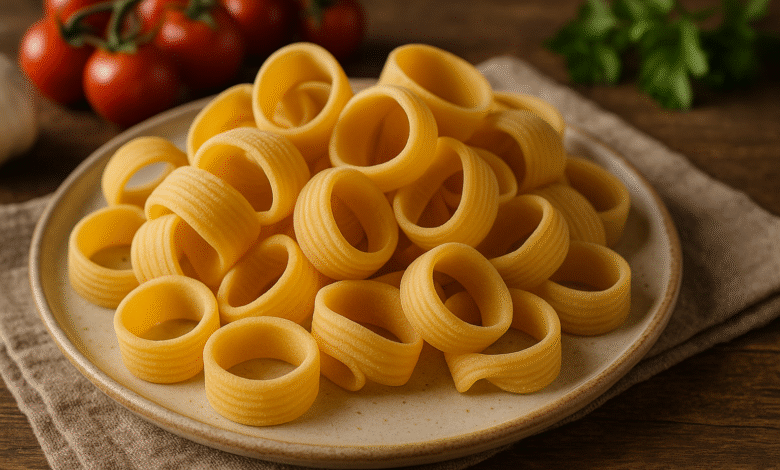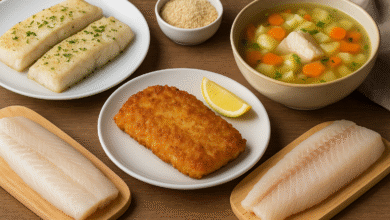Calamariere: Unveiling the History, Shape, and Timeless Allure of This Traditional Italian Pasta

When it comes to Italian gastronomy, pasta has always been at the heart of the country’s culinary heritage. Italy is home to hundreds of unique pasta shapes, each with its own cultural story and purpose. Among these many varieties, calamariere holds a distinctive place for its fascinating shape, deep-rooted history, and its connection to Italy’s southern coastal regions. This traditional pasta is more than just a food—it’s a symbol of Italy’s long-standing love for the sea and simple, wholesome ingredients.
What Is Calamariere?
Calamariere is a traditional pasta that originates from Southern Italy, especially the Calabrian region. The name comes from the Italian word calamari, which means “squid.” This name perfectly suits the pasta’s unique appearance—it closely resembles the body of a squid, with a long, tubular shape and a slight curl. Compared to other tube-shaped pastas like penne or ziti, calamariere is often thicker and has a more robust texture.
One of the standout features of calamariere is its ridged exterior. These ridges serve a functional purpose: they help the pasta cling to sauces, ensuring that every bite is flavorful and satisfying. This makes calamariere especially ideal for seafood-based dishes or hearty tomato sauces. The pasta is traditionally served with seafood such as squid, shrimp, clams, or mussels, connecting its name and form to the sea.
The Origins and History of Calamariere
The story of calamariere goes back several centuries, likely to the 17th or 18th century, when pasta-making techniques began to evolve in Southern Italy. This period saw the creation of many regional pasta types, each inspired by local ingredients and culinary needs. Calamariere emerged in coastal regions like Calabria, Campania, and Sicily—areas that have always relied heavily on the Mediterranean’s rich seafood bounty.
Calabrian cuisine, in particular, is known for its use of fresh seafood and bold flavors. As pasta became more refined and accessible, local artisans started experimenting with shapes that could best complement seafood sauces. The calamariere was born out of this creative spirit—a pasta that not only honored the region’s maritime lifestyle but also served as the perfect companion to seafood-based dishes.
While no single inventor of calamariere is known, it remains a testament to Italy’s regional diversity and commitment to culinary craftsmanship. The name itself underscores the deep bond between Italian cuisine and the ocean, celebrating centuries of fishing, cooking, and community along the southern coasts.
What Makes Calamariere Unique?
The uniqueness of calamariere lies primarily in its form and texture. Its broad, tubular body allows it to hold substantial amounts of sauce, while the ridged surface helps trap every bit of flavor. Unlike smooth pastas, the slightly coarse feel of calamariere provides a richer mouthfeel and makes it perfect for thick, savory sauces.
Many versions of calamariere are still handmade today, preserving the rustic charm of traditional Italian pasta-making. This artisanal touch gives each piece an irregular shape, adding character and enhancing the pasta’s ability to hold sauce. The handmade nature of calamariere contributes not only to its taste but also to its visual appeal—it looks authentic, hearty, and deeply Italian.
Another reason why calamariere remains so beloved is its versatility. Although it was originally intended for seafood recipes, it adapts beautifully to many modern dishes. It can be served with vegetables, meats, or creamy sauces, depending on regional preferences and seasonal ingredients. Whether featured in an elegant seafood platter or a homestyle tomato-based recipe, calamariere never fails to impress.
Regional Roots: Calabria and Beyond
While calamariere is most closely associated with Calabria, it has made its way across other parts of Italy and even into international kitchens. Calabria’s coastal landscape and Mediterranean influence have long shaped its cuisine, emphasizing seafood, olive oil, and fresh produce. Dishes featuring calamariere often reflect these traditions—simple yet flavorful meals that highlight the harmony between land and sea.
In Calabrian kitchens, calamariere is often paired with squid, shrimp, or shellfish in a light tomato or white wine sauce. The pasta’s hollow shape absorbs the sauce perfectly, creating a flavorful bite every time. Fresh herbs like basil and parsley, a drizzle of olive oil, and a touch of spice from Calabrian chili peppers elevate the dish further.
Beyond Calabria, chefs across Italy and around the world are rediscovering calamariere as part of a growing appreciation for authentic regional foods. It now appears on restaurant menus in innovative forms—sometimes paired with creamy sauces, roasted vegetables, or even plant-based ingredients.
The Modern Revival of Traditional Pasta
In recent years, there has been a renewed fascination with traditional Italian pastas like calamariere. As food enthusiasts and chefs look for more authentic, handmade ingredients, older pasta varieties are being celebrated once again. This revival reflects a broader movement toward slow food and regional authenticity—values that have always been at the heart of Italian cooking.
Chefs and home cooks alike are embracing calamariere not only for its flavor and texture but also for its cultural story. By bringing this pasta back to modern tables, they’re keeping alive centuries of tradition while adding contemporary flair. Whether in rustic family recipes or gourmet restaurant presentations, calamariere continues to represent the soul of Italian cuisine.
How to Cook and Serve Calamariere
Cooking calamariere is similar to preparing other pastas, but because of its thickness, it usually requires a slightly longer cooking time. Boil it in salted water until al dente, ensuring that the pasta retains its firm texture.
The most traditional way to serve calamariere is with seafood. A classic preparation involves sautéing garlic, olive oil, and red pepper flakes, then adding a mix of seafood—such as squid, shrimp, and clams—along with white wine and a hint of lemon. Tossing this sauce with the pasta creates a vibrant dish that perfectly captures the flavors of the Mediterranean.
For those who prefer vegetarian or meat-based options, calamariere also pairs beautifully with tomato-based sauces, creamy Alfredo variations, or roasted vegetables like eggplant and zucchini. Its sturdy shape ensures it holds up well under any sauce, making it a perfect choice for both light and hearty meals.
Frequently Asked Questions (FAQs)
Q1: What is calamariere pasta made from?
Calamariere is typically made from durum wheat semolina and water, the same base ingredients as most traditional Italian pastas. Some artisanal producers may also use eggs for a richer flavor and texture.
Q2: Is calamariere only used in seafood dishes?
While it’s most popular with seafood sauces, calamariere is versatile enough to be served with vegetables, meats, or creamy sauces as well.
Q3: How does calamariere differ from other tubular pastas?
Calamariere is usually wider, thicker, and slightly curved, with ridges that hold sauce better than smoother varieties like ziti or penne.
Q4: Where can I buy calamariere?
You can find calamariere in Italian specialty stores, gourmet food markets, or online pasta shops. Some brands also produce it using traditional bronze-die methods for an authentic texture.
Q5: What wine pairs well with calamariere dishes?
For seafood-based calamariere dishes, light white wines like Pinot Grigio or Vermentino work beautifully. For tomato or cream sauces, try a medium-bodied red like Chianti or Montepulciano.
Conclusion
Calamariere is a remarkable pasta that represents the essence of Southern Italy’s culinary spirit. Its name pays homage to the sea, its shape captures sauces beautifully, and its versatility makes it suitable for countless recipes. From its Calabrian roots to modern kitchens around the world, calamariere continues to embody the timeless connection between tradition, flavor, and culture. Whether paired with seafood, vegetables, or meat, this pasta remains a shining example of why Italian cuisine never goes out of style.
Read also:Unlocking the Secrets of Momfood Importantcool for Busy Families



